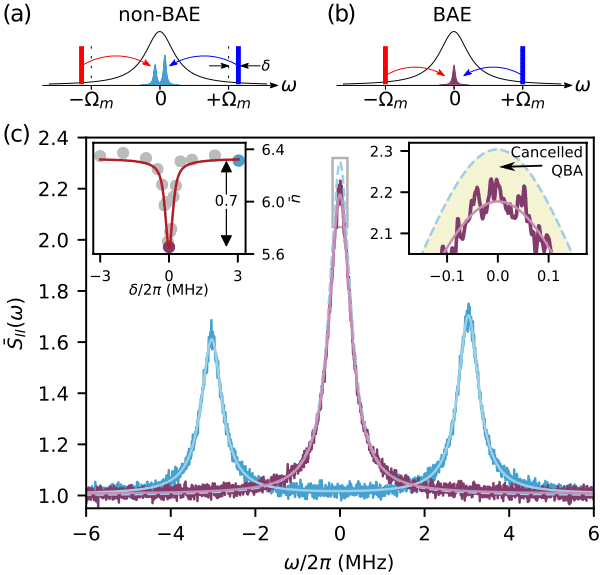
Optical Backaction-Evading Measurement of a Mechanical Oscillator
2Cavendish Laboratory, University of Cambridge
We have demonstrated a backaction-evading measurement of the motion of a mechanical oscillator in the optical domain, a quantum non-demolition method that allows surpassing the standard quantum limit and achieving in principle arbitrary measurement sensitivities.
Quantum mechanics imposes a limit on the precision of a continuous position measurement of a harmonic oscillator, as a result of quantum backaction arising from quantum fluctuations in the measurement field. A variety of techniques to surpass this standard quantum limit have been proposed, such as variational measurements, stroboscopic quantum non-demolition and two-tone backaction-evading (BAE) measurements. The latter proceed by monitoring only one of the two non-commuting quadratures of the motion, whereby all quantum backaction is diverted to the complementary unmeasured quadrature, and is absent from the measurement record. This technique, originally proposed by Thorne et al. in 1978 in the context of gravitational wave detection, allows in principle arbitrary measurement sensitivities and has not been implemented using optical interferometers to date. Here we demonstrate continuous two-tone backaction-evading measurement in the optical domain of a localized GHz frequency mechanical mode of a photonic crystal nanobeam cryogenically and optomechanically cooled in a 3He buffer gas cryostat close to the ground state. Employing quantum-limited optical heterodyne detection, we explicitly show the transition from conventional to backaction-evading measurement. We observe up to 0.67dB (14%) reduction of total measurement noise, thereby demonstrating the viability of BAE measurements for optical ultrasensitive measurements of motion and force in nanomechanical resonators.

Powered by Eventact EMS